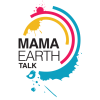In this episode, we dive into the concept of the circular economy, exploring how it differs from the traditional linear model and why it’s essential for a sustainable future. From understanding the role of design in extending product lifecycles to discovering innovative companies like Loop by Terracycle and Herman Miller, we highlight real-world examples of circularity in action.
Key differences between the linear and circular economies:
- Linear Economy: Us humans have adopted a linear approach that maximizes profits without paying the true costs. (Short term profit, no real thought of the long term implications)
- Circular Economy: Nature shows us the way with a circular approach, where everything goes back into the earth to feed the next cycle, maximizing the life cycle of products. (There is a )
- Linear Economy: Waste equals waste.
- Circular Economy: Waste equals food for the next step in the cycle.
- Linear Economy: Design prioritizes customer needs, usability, and appealing packaging.
- Circular Economy: Design prioritizes recycling, easy repair and replacement of components, and ultimately, a product’s full lifecycle.
Links from the episodes:
Ellen MacArthur Foundation
The Story of stuff by Annie Leonard
Patagonia
The Shitthropocene | Full Film | Welcome to the Age of Cheap Crap
Nudie Jeans
Rent Runway
ThredUp
Shop Retold
Fairphone
Plaine Products
Loop by Terracycle
Herman Miller
Cradle to Cradle
KEY TAKE AWAY
“The circular economy reimagines waste as a resource, driving sustainability by keeping products and materials in use and regenerating nature.”
Image Source: Final Straw

About the author, Mariska
Hi, I’m Mariska – podcast host, artist, sustainability advocate and consultant, and storyteller driven by a deep passion for our planet. Sustainability isn’t just a topic I discuss; it’s a way of life I embody through my work, actions, and everyday choices.
My journey began several years ago when I started experimenting with trash as a medium in my artwork. What began as creative curiosity quickly turned into a deep dive into the environmental impact of waste. That curiosity expanded into a broader connection with nature—including a life-changing trek to the summit of Mount Kilimanjaro, where I found both clarity and purpose. It was there that I made the decision to leave the corporate world behind and commit fully to environmental work.
In 2018, I took that message public in the UAE by wearing every piece of trash I generated for 30 days. The result—65 kilograms of waste—sparked national conversations around sustainability and waste reduction. That bold experiment also became the catalyst for my podcast, Mama Earth Talk, where I’ve since connected with global thought leaders to explore sustainability and inspire meaningful action.
Over the years, I’ve collaborated with organizations such as Nespresso, Costa, and Dubai International Airport to implement practical and impactful environmental solutions. From optimizing waste management systems to leading awareness campaigns, I specialize in designing strategies that create real, lasting change.
My artwork—blending environmental advocacy with creative expression—has been collected by public figures including comedian Trevor Noah, environmentalist Adrian Grenier, entrepreneur Gary Vaynerchuk, radio host Kris Fade, Grammy Award-winning DJ Black Coffee, and NBA player Mason Plumlee. Through public speaking, podcasting, and art, I aim to inspire individuals and organizations to rethink their relationship with the environment.
With over a decade of international experience in design and project management across Australia, South Africa, the UK, India, and the UAE, I bring a unique mix of creativity and strategic insight to sustainability challenges. My global perspective allows me to collaborate across cultures, drive innovation, and empower others to make a meaningful impact.
As a lifelong learner and passionate advocate, I focus on practical, holistic solutions to environmental challenges—guided by systems thinking and a deep commitment to action. I hold a BA in Design, a postgraduate degree in Environmental Science, and a Master’s in Sustainable Design.

